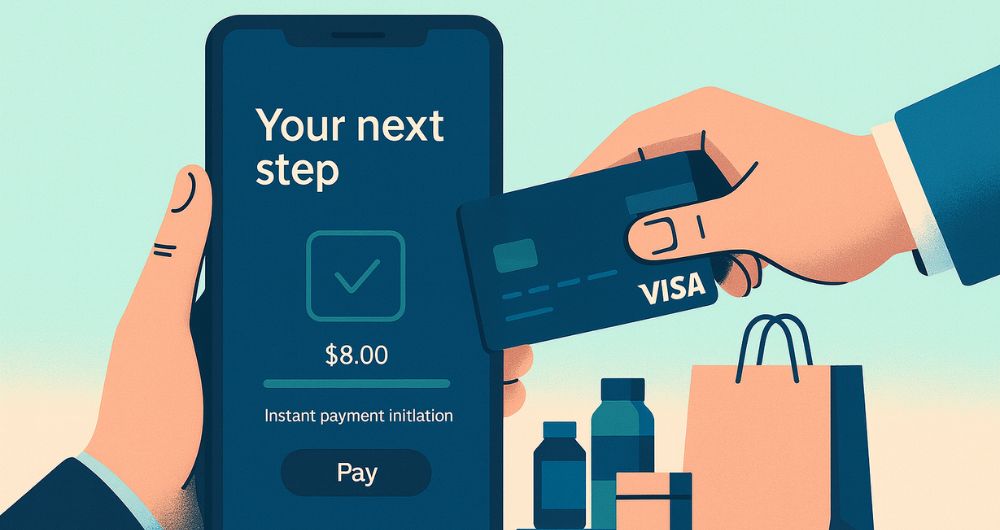
The Importance of Personalized Banking Campaigns
Banking has always been a personal business. Every customer has unique needs, preferences, and behaviors, making personalized communication crucial for fostering strong relationships and loyalty. Personalized banking campaigns transform generic messages into targeted interactions that make customers feel valued and understood. This approach enhances satisfaction and engagement, driving profitability and retention.
When banks send messages that resonate on a personal level, they turn routine transactions into memorable experiences. Imagine a customer receiving a birthday greeting from their bank right after a celebratory purchase. Such gestures not only build goodwill but also reinforce the bond between the bank and the customer. Personalized campaigns can achieve this by addressing individual circumstances, preferences, and behaviors, rather than treating all customers the same.
The Role of Traditional Campaigns in Banking
Traditional banking campaigns, such as mass emails, direct mail, and SMS alerts, have been the mainstay of customer communication strategies for decades. These campaigns efficiently reach a broad audience with uniform messages, promoting products, services, and special offers. While effective for raising awareness and conveying important information, they often lack the personal touch needed to deeply engage customers.
Despite their broad reach, traditional campaigns must adapt to remain effective in an era saturated with marketing messages. The challenge lies in making these campaigns more personalized and relevant without losing their wide reach. This is where integrating real-time decision engines and transactional data analysis can make a significant difference.
The Power of Real-Time Decision Engines
Understanding Real-Time Decision Engines
Real-time decision engines are transformative technologies in the banking sector. These engines process data as generated, enabling banks to make immediate, well-informed decisions about customer interactions. They use advanced algorithms to sift through vast amounts of information, identify patterns, and predict customer behavior. This allows for delivering highly personalized messages precisely when they are most relevant.
Key aspects of real-time decision engines include:
- Continuous Data Integration: Real-time decision engines integrate data streams from various sources, such as transactional data, location data, and online behavior. This continuous flow of information ensures that the most current data is always used for decision-making.
- Instant Analysis: The engines analyze incoming data on the fly, allowing banks to respond immediately to customer behavior or context changes.
- Automated Responses: Based on the analysis, the engines can trigger automated responses, such as sending personalized offers, alerts, or messages.
Benefits of Real-Time Transactional Data Analysis
Real-time transactional data analysis offers several benefits that can significantly enhance the effectiveness of banking campaigns:
- Timeliness: Real-time analysis allows banks to engage with customers when they are most receptive. For example, sending a congratulatory message immediately after a significant purchase can create a positive and memorable customer experience.
- Contextual Relevance: By understanding the context of each transaction, banks can tailor their messages to be more relevant. This might involve offering discounts on related products, providing timely financial advice, or acknowledging personal milestones.
- Improved Customer Insights: Real-time data analysis provides deep insights into customer behavior, preferences, and needs. This information is invaluable for refining marketing strategies, developing new products, and improving customer service.
- Enhanced Customer Engagement: Personalized messages that reflect real-time data are more likely to resonate with customers, leading to higher engagement rates. Engaged customers are more likely to utilize the bank’s services, recommend them to others, and remain loyal.
Practical Applications of Real-Time Decision Engines
To illustrate the power of real-time decision engines, consider the following applications:
- Fraud Detection: Real-time analysis can detect unusual transaction patterns indicative of fraud, allowing banks to alert customers immediately and take preventive measures.
- Personalized Offers: When a customer makes a purchase, the bank can instantly analyze their spending habits and send a personalized offer, such as a discount on future purchases or an upgrade to a premium service.
Real-time decision engines and transactional data analysis represent a significant advancement in how banks can interact with their customers. By leveraging these technologies, banks can transform traditional campaigns into dynamic, personalized experiences that drive customer satisfaction and loyalty.
Enhancing Traditional Campaigns with Real-Time Insights
Integrating real-time decision engines and transactional data analysis into traditional banking campaigns can significantly enhance their effectiveness. Here are some practical examples of how real-time insights can transform conventional campaigns.
Birthday Celebrations
Traditional Campaign:
Sending a generic birthday email or SMS.
Real-Time Enhancement:
Sending a personalized message exactly when the customer makes a purchase on their birthday at a restaurant: “Happy Birthday from [Bank Name]! We hope you are enjoying this special day sharing a meal with your loved ones.”
If the customer makes a purchase at a bar: “Happy Birthday from [Bank Name]! Cheers to you on your special day. Let’s toast together!”
Holiday Shopping Events (Black Friday, Christmas):
Traditional Campaign:
Sending promotional emails or SMS about holiday discounts.
Real-Time Enhancement:
Sending instant notifications when the customer makes a purchase during Black Friday, like: “Thanks for shopping with your [Bank Name] card this Black Friday! Remember you can defer your payments for up to 3 months at no extra cost.”
Sending a thank-you message when the customer buys gifts during Christmas: “Season’s Greetings from [Bank Name]! Enjoy a 0% interest loan on your holiday purchases for the first six months.”
Account Alerts and Offers:
Traditional Campaign:
Monthly or quarterly statements with offers.
Real-Time Enhancement:
Immediate notification when the account balance reaches a certain threshold, suggesting a savings product: “Congratulations! You’ve reached your savings goal. Open a premium savings account today and earn double interest for the next three months.”
Real-time offer when a significant deposit is made: “Just received a large deposit? Grow it faster with our high-yield investment options. Start investing now and get your first-month fee-free.”
Using Geolocation for Contextual Campaigns

Geolocation technology allows banks to provide highly contextual and location-specific messages to their customers. By combining geolocation with real-time transaction data, banks can create personalized campaigns that are not only timely but also highly relevant to the customer’s immediate surroundings and activities. This dual approach enhances the customer experience by ensuring that interactions are meaningful and context-aware.
Benefits of using geolocation include:
- Context-Aware Messaging: Banks can send messages based on both the customer’s current location and recent transactions, creating highly relevant and personalized interactions.
- Enhanced Customer Convenience: Providing location-specific information, such as the nearest ATM or branch locations, helps customers find services easily.
- Increased Engagement: Customers are more likely to respond to offers and messages that are relevant to their immediate surroundings and recent activities.
Here are some real-world examples using both real-time transactions and geolocation for hyper-personalized campaigns.
Travel Notifications
Traditional Campaign:
General travel insurance offer.
Geolocation + Transaction Enhancement:
When a customer makes a purchase at an airport, send a personalized message: “Safe travels from [Bank Name]! We noticed you’re at the airport. Don’t forget to activate international payments to be able to use your cards abroad.”
Local Dining Offers
Traditional Campaign:
Generic dining discount offers.
Geolocation + Transaction Enhancement:
When a customer makes a transaction at a restaurant in a new city, send a personalized follow-up: “Welcome to [City Name]! We hope you enjoyed your meal. Show this message at nearby restaurants and get a 20% discount on your next visit.”
Event-Based Messages
Traditional Campaign:
Announcing upcoming events via email or SMS.
Geolocation + Transaction Enhancement:
When a customer makes a purchase at or near an event location: “Enjoying the festival? We saw you made a purchase nearby. Visit our booth and receive a special gift from [Bank Name]. Plus, learn about our exclusive event-only offers!”
Best Practices for Real-Time Campaign Integration
Avoiding Message Overload
While real-time campaigns can significantly enhance customer engagement, avoiding overwhelming customers with too many messages is crucial. Here are some best practices to ensure a balanced approach:
- Frequency Control: Implement frequency caps to limit the number of messages a customer receives within a specific timeframe. For example, no more than one promotional message per day.
- Relevance Filtering: Use data to ensure messages are highly relevant to the customer’s current context and preferences. Irrelevant messages can quickly lead to frustration and disengagement.
- Customer Preferences: Customers should be able to set their communication preferences, including the type of messages they want to receive and the preferred channels (SMS, email, app notifications, etc.).
- Prioritize Important Messages: Ensure critical alerts (such as fraud notifications or account updates) take precedence over promotional messages to avoid desensitizing customers to important communications.
Ensuring Seamless Customer Experience
A seamless customer experience is essential for the success of real-time campaigns. Here are some strategies to achieve this:
- Consistent Messaging: Maintain a consistent tone and style across all communication channels to reinforce brand identity and avoid confusing customers.
- Integrated Systems: Ensure that all customer interaction channels (mobile app, website, in-branch) are integrated so customer data is consistent and up-to-date across all platforms. This integration helps provide a cohesive experience.
- Real-Time Responsiveness: Leverage real-time data to ensure that messages are sent at the most appropriate moments, enhancing their relevance and impact.
- Personalized Content: Use insights from customer data to personalize messages, making them more engaging and meaningful. This can include addressing customers by name and referencing recent transactions or activities.
- Feedback Mechanisms: Implement mechanisms for customers to provide feedback on their communication preferences and experiences. This feedback can be used to refine and improve campaign strategies continually.
How Latinia Can Help
Latinia leverages real-time technology to transform traditional banking campaigns into highly personalized, impactful interactions. Here’s how we can support your bank:
Advanced Real-Time Analysis and Decision Engine
Our cutting-edge technology enables real-time data analysis and decision-making, ensuring your messages are timely, relevant, and contextually aware. This engine processes vast amounts of data to provide insights that help tailor customer interactions in real-time.
Next Best Action (NBA)
Latinia’s NBA engine uses sophisticated algorithms to predict and suggest the next best action for each customer based on their current behavior and historical data. This ensures that every communication is personalized and relevant, enhancing customer satisfaction and engagement.
Subscription Engine
Our subscription engine allows customers to manage their communication preferences easily. This ensures they receive the messages they care about through their preferred channels, reducing the risk of message overload and improving overall customer experience.
Critical Message Gateway
Latinia’s critical message gateway ensures that essential communications, such as fraud alerts and account updates, are delivered promptly and reliably. This feature helps maintain customer trust by ensuring critical information reaches customers immediately.
Proven Expertise and Global Reach
Latinia’s solutions are trusted by some of the world’s leading banks, like Santander and TSB Bank. Our experience and technology are backed by impressive metrics:
- 18,000+ Events/Sec: Financial events analyzed in real-time.
- 170M+ Clients/Day: Banking customers served with Latinia’s solutions.
- 50,000+ Rules/Sec: Business rules analyzed with our Real-Time Decision Engine.
- 15+ Countries: A global company with an international presence, serving clients across various regions.
By integrating these advanced solutions, Latinia helps banks create dynamic, personalized campaigns that resonate with customers and drive long-term loyalty. Our expertise and technology ensure that your bank can deliver exceptional, real-time customer experiences.
Ready to revolutionize your banking campaigns? Contact Latinia today to learn how our real-time solutions can enhance customer communications and drive business growth.
Visit our website or reach out to our team for a personalized consultation.
Categories: Marketing & Sales

